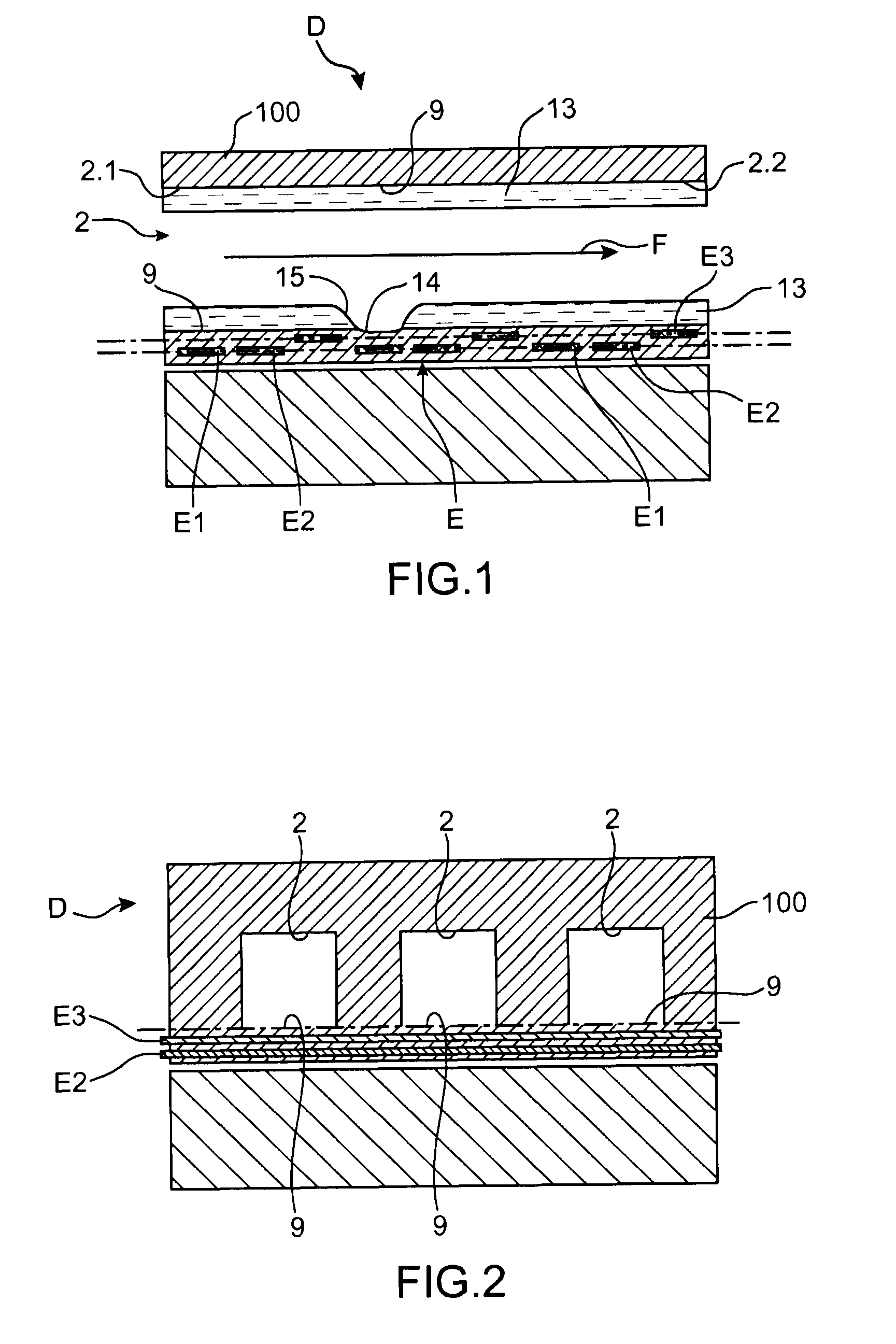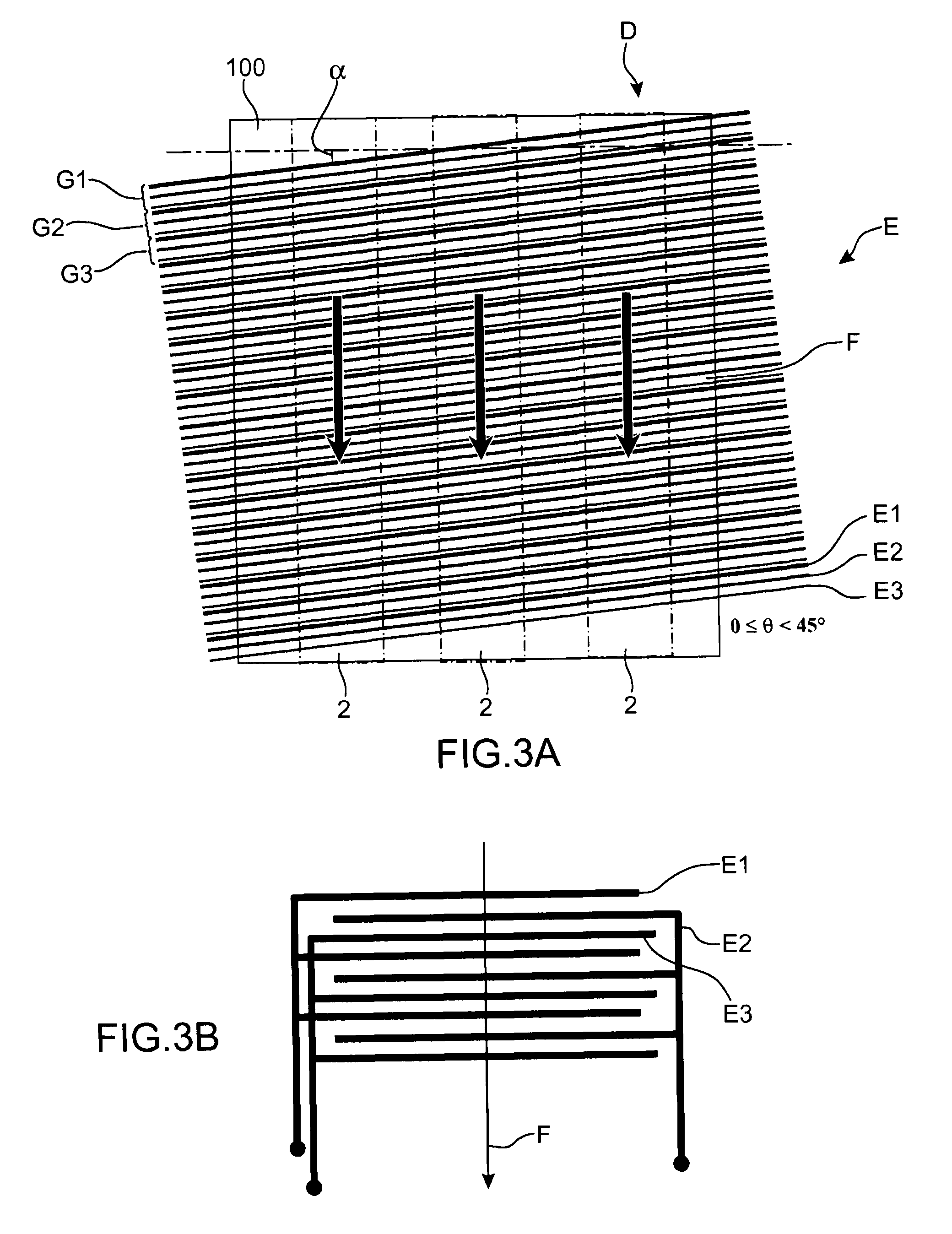Heat exchange device with confined convective boiling and improved efficiency
a heat exchange device and convective technology, applied in the field of convective and convective boiling heat exchange devices, to achieve the effect of improving the efficiency of the element to be cooled and reducing the heat exchange coefficien
- Summary
- Abstract
- Description
- Claims
- Application Information
AI Technical Summary
Benefits of technology
Problems solved by technology
Method used
Image
Examples
Embodiment Construction
[0005]The previously stated aim is attained through a heat exchange surface in which an electro-wetting device is used to move the drying line in the direction of flow of the liquid, which is formed on the heat exchange surface; thus, by moving this drying line in the liquid's direction of flow the liquid is moved along the wall of the duct, encouraging vapour evacuation.
[0006]Indeed, in convective boiling conditions in a micro-channel the liquid is moved in the micro-channel by convection, for example by means of a pump. At the entrance of the channel the liquid is “cold” and the liquid phase is the predominant phase.
[0007]Vapour bubbles are formed on the surface of the micro-channel. These increase in number. They coalesce until they fill the centre of the micro-channel. Only a film of liquid remains on the wall of the channel. Vapour is then the predominant phase. And cooling takes place by dissipation of the vapour formed in this manner, which is accomplished in a forced fashion...
PUM
| Property | Measurement | Unit |
|---|---|---|
| frequency | aaaaa | aaaaa |
| frequency | aaaaa | aaaaa |
| γ | aaaaa | aaaaa |
Abstract
Description
Claims
Application Information
 Login to View More
Login to View More - R&D
- Intellectual Property
- Life Sciences
- Materials
- Tech Scout
- Unparalleled Data Quality
- Higher Quality Content
- 60% Fewer Hallucinations
Browse by: Latest US Patents, China's latest patents, Technical Efficacy Thesaurus, Application Domain, Technology Topic, Popular Technical Reports.
© 2025 PatSnap. All rights reserved.Legal|Privacy policy|Modern Slavery Act Transparency Statement|Sitemap|About US| Contact US: help@patsnap.com



